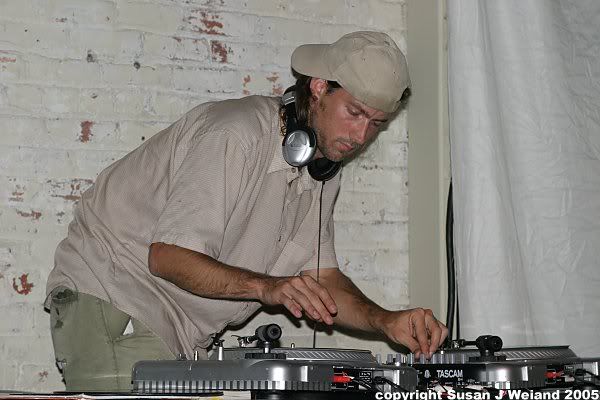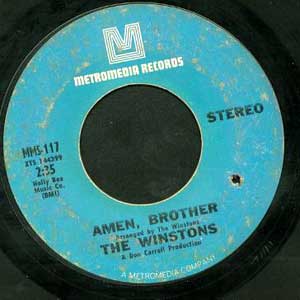
It probably comes as no surprise that quite a lot of people who enjoy the MLA also smoke (or have smoked) either grass or hash. Even today, it can prove ill-advised to admit to it in certain careers, and
Lenny Bruce got it wrong predicting that it would become legal within a few years (he spoke in the early 60s) because "all the law students I know smoke it." He didn't realise just how hard 'They' would beat us all up in the later Sixties, and ever since - and how
cowardly the dope-smokers who wanted to become lawyers, politicians, journalists, film stars, etc - let alone parents, school-teachers, policemen (even) would mostly prove. Rock musicians seem the bold and brave exception. Oh and people demanding Hemp as a medicine (possibly one of the oldest medicinally used plants on the planet). Well, now someone tells me that Carl Sagan liked a smoke. I'd missed that.
According to Wiki:
Carl Sagan was an avid user of marijuana, although he never admitted this publicly during his life. Under the pseudonym "Mr. X", he wrote an essay concerning cannabis smoking in the 1971 book Marihuana Reconsidered, whose editor was Lester Grinspoon. In his essay, Sagan commented that marijuana encouraged some of his works and enhanced experiences. After Sagan's death, Grinspoon disclosed this to Sagan's biographer, Keay Davidson. When the biography, entitled Carl Sagan: A Life, was published in 1999, the marijuana exposure stirred some media attention (quickly forgotten). I had read Grinspoon years back, but didn't much worry who hid behind the mask of Mr X. It could so easily have hidden a creative scientist in just about any field...
I'd like to produce in evidence someone my mum loved (and she hated dope-smoking). I can do it because he has left the planet, and because, before leaving, he decided to declare his love in his own words.
Louis Armstrong. You can read a whole bunch of his own words here, under
Pot Smoker of the Month.
But more relevant to the whole damned stupid story of wasted money in pursuit of a victimless crime (and if I could grow my own I wouldn't come in touch with either criminals or hard drugs) - in the light of
recent new estimates of the harm that different drugs do to individuals and society [1] - I would like to quote
a chunk from this website (and I hope they'll forgive me - but I just know a lot of people don't click through on links - and they put the case so clearly!) These lucid and sane words come from
Keith Halderman: Louis Armstrong and Marijuana an Anecdote [2]
In his recent biography Laurence Bergreen summed up Armstrong’s relationship with the drug; "He loved marijuana too. He smoked it in vast quantities from his early twenties until the end of his life; wrote songs in praise of it; and persuaded his musician friends to smoke it when they played. He planned to call an unpublished sequel to his autobiography Gage, his pet name for marijuana, but once his manager found out about the title and the subject of the work, he suppressed the manuscript, trying to protect Louis's reputation. Sections of the work that survived the censorship show that he regarded it as an essential element in his life and beneficial to his health." (from Louis Armstrong: An Extravagant Life, page 4) Armstrong maintained marijuana to be a thousand times better than whiskey and that it relaxed him while also keeping him clear headed. He pointed out that, though he smoked marijuana, during the entire forty-five years he had been blowing trumpet he had never let his public down, claiming that they had a reverence for each other. [...]

The arguments against marijuana have drastically changed over time. During the 1920s and 1930s, when prohibition came about, reform groups and government officials strenuously maintained that marijuana caused it users to become violent and that long term use led to inevitable insanity. After World War II the primary rationale for keeping marijuana illegal became the "stepping stone" or "gateway" theory, the idea that smoking pot caused the use of harder more hazardous drugs.
A common modern day point of view on the drug is presented in the following paragraph from the online encyclopedia Encarta's entry on marijuana; "Negative effects of marijuana use can include confusion, acute panic reactions, anxiety attacks, fear, a sense of helplessness, and loss of self-control. Chronic marijuana users may develop amotivational syndrome characterized by passivity, decreased motivation, and preoccupation with taking drugs. Like alcohol intoxication, marijuana intoxication impairs judgment, comprehension, memory, speech, problem-solving ability, reaction time, and driving skills." Contemporary charges also include a propensity towards lung disease and depression in users.[...]
Although he operated in an often violent milieu, which included the honky tonks of New Orleans and mafia owned venues in Chicago and New York,
there is no record of Armstrong committing violent acts himself, no arrests, no charges of domestic violence from his ex-wives. As for insanity he contended that he "always had a sane mind from the day he was born." [...]
The notion that marijuana leads to the use of more problematic drugs also finds no support from the life of Louis Armstrong.
Easily available heroin and cocaine held no interest for him and Armstrong never used them. [...]
Armstrong eluded amotivational syndrome too, in fact, a fair description of him might include the word workaholic. He composed dozens of jazz standards, recorded over a thousand songs, averaged more than 300 concert dates per year, toured much of the world for the State Department, had parts in thirty plus films, became ubiquitous on radio and television, and found time to write two autobiographies, more than ten magazine articles, hundreds of pages of memoirs, and thousands of letters. He kept up this strenuous pace well into his sixties.
He worked so hard because he enjoyed it, as he enjoyed life in general.
No confusion, acute panic reactions, anxiety attacks, fear, a sense of helplessness, and loss of self-control plagued Louis Armstrong. He often commented on how good life had been to him.
Marijuana did not affect Armstrong’s memory, he carried literally thousands of tunes in his head. It did not impair his judgment, comprehension, or problem solving ability when it came to his career, he earned the accolades of the world as well as financial security. His speech in the form of scat singing has influenced vocalists ever since it was first heard. As for reaction time, it was an essential element of his genius. The improvisional nature of jazz required quick and innovative reactions and Louis Armstrong was the master.
Louis Armstrong's biography reveals no automobile accidents. It does, however, disclose a
remarkable set of lungs. A consensus of jazz critics consider recordings he made for Okeh records in 1925 under the name Louis Armstrong and his Hot Five then later Hot Seven to be among the finest in jazz history, with his ability to hit the high notes especially remarkable. No one with lungs impaired by marijuana smoking would have been able play that music. Yet, Armstrong reported that some specific songs were laid down after he and the band had smoked, the implication being that this was the usual practice. One of the tunes named "Muggles" was a synonym for marijuana. Armstrong continued to play and record until the very last year of his life, with plans for more music when his health recovered. He died of heart disease, one of the few illnesses that the government has not yet tried to link to, as Armstrong would put it, that beautiful gage.
In his book Chocolate to Morphine Dr. Andrew Weil correctly contends that, "Any drug can be used successfully, no matter how bad its reputation, and any drug can be abused, no matter how accepted it is. There are no good or bad drugs; there are only good and bad relationships with drugs." The evidence is clear, Louis Armstrong had a very good relationship with marijuana and we are all the better for it.

So finally, in his own words:
As we always used to say, gage is more of a medicine than a dope. But with all the riggermaroo going on, no one can do anything about it. After all, the vipers during my haydays are way up there in age - too old to suffer those drastic penalties. So we had to put it down. But if we all get as old as Methuselah our memories will always be of lots of beauty and warmth from gage. Well, that was my life and I don't feel ashamed at all. Mary Warner, honey, you sure was good and I enjoyed you 'heep much'. But the price got a little too high to pay (law wise). At first you was a 'misdemeanor'. But as the years rolled on you lost your misdo and got meanor and meanor. (Jailhousely speaking).
Sooo "Bye Bye, I'll have to put you down, Dearest."
[signed] `Soul Foodly, Satchmo'.
[1]Professor Nutt and his team analysed the evidence of harm caused by 20 drugs including heroin, cocaine, cannabis, ecstasy, LSD and tobacco.
They asked a group of 29 consultant psychiatrists who specialise in addiction to rate the drugs in nine categories. Three of these related to physical harm, three to the likelihood of addiction and three to social harms such as healthcare costs. The team also extended the analysis to another group of 16 experts spanning several fields including chemistry, pharmacology, psychiatry, forensics, police and legal services.
The final rankings placed heroin and cocaine as the most dangerous of the 20 drugs. Alcohol was fifth, the class C drug ketamine sixth and tobacco was in ninth place, just behind amphetamine or "speed".
Cannabis was 11th, while LSD and ecstasy were 14th and 18th respectively. The rankings do take into account new evidence that specially cultivated "skunk" varieties of cannabis available now are two to three times stronger than traditional cannabis resin. [NB: 2-3 times seems modest, as the media often amp that up to 25 times stronger - such hysteria seems best countered with
Ben Goldacre's Bad Science column
To get their scare figure, The Independent have compared the worst cannabis from the past with the best cannabis of today. But you could have cooked the books in exactly the same way 30 years ago if you’d wanted: in 1975 the weakest herbal cannabis analysed was 0.2%; in 1978 the strongest herbal cannabis was 12%. Oh my god: in just 3 years herbal cannabis has become 60 times stronger.
And in fact, what’s most amazing is that this scare isn’t new. In the US, in the mid 1980s, during Reagan’s “war on drugs”, it was claimed that cannabis was 14 times stronger than in 1970, which rather sets you thinking. If it was 14 times stronger in 1986 than in 1970, and it’s 25 times stronger today than the beginning of the 1990s, does that mean it is now, in fact, 350 times stronger than 1970?
That’s not even a crystal in a plant pot. That’s impossible.
[2] Source: Trebach Report (3-29-06)
[Keith Halderman is a research assistant at the Trebach Institute and is working on his Ph.D at American University. His is a member of the Liberty and Power group blog at HNN.]
Excuse me, I have to stop now, as it sounds as though someone is kicking down my front door for the fourth time in my life... (the others happened back in the Sixties when the Notting Hill police station had a famously corrupt guy in charge). And I don't even have any weed! (sigh) Back then it wouldn't have mattered, as they often brought their own to plant on you...







